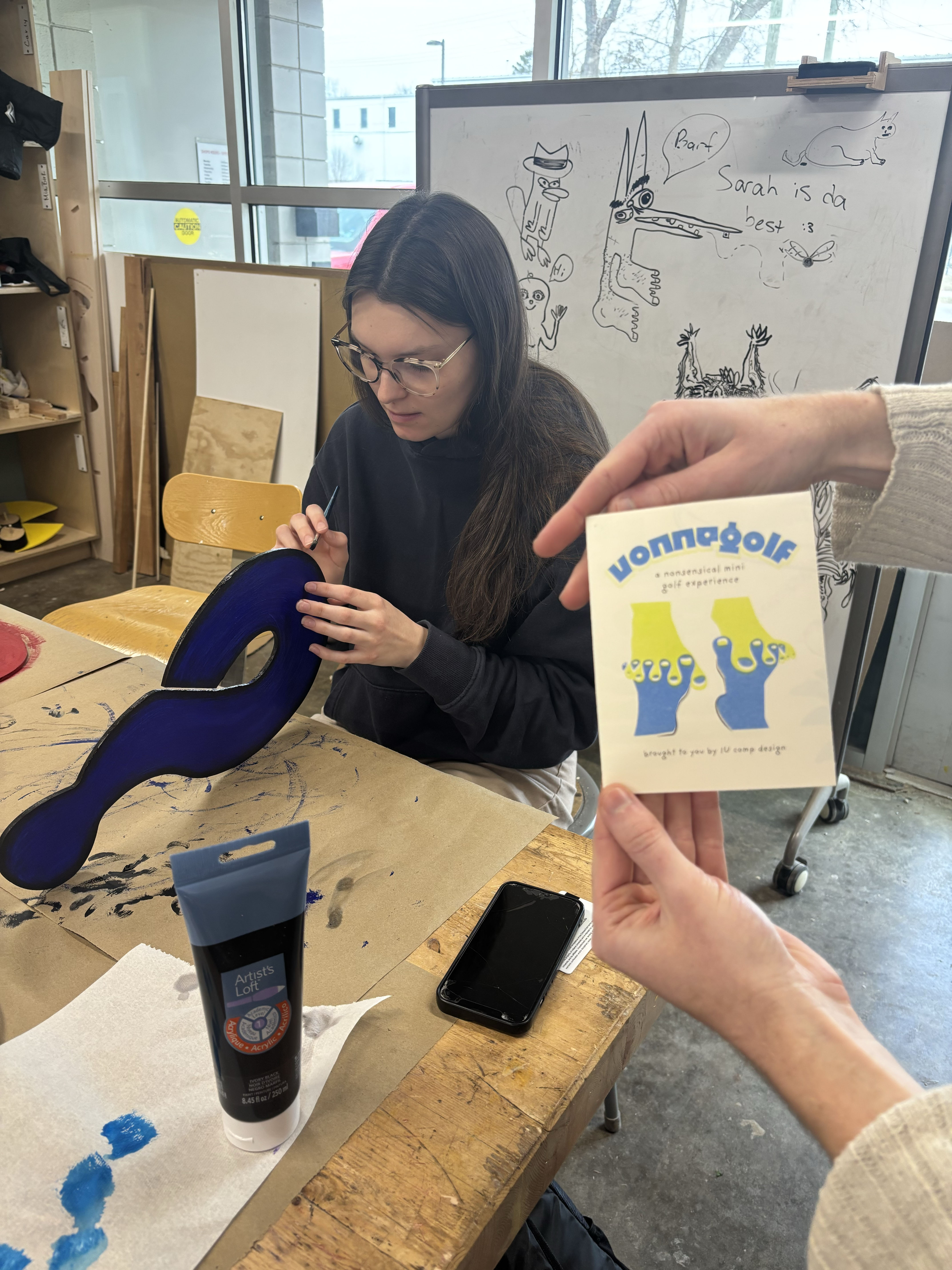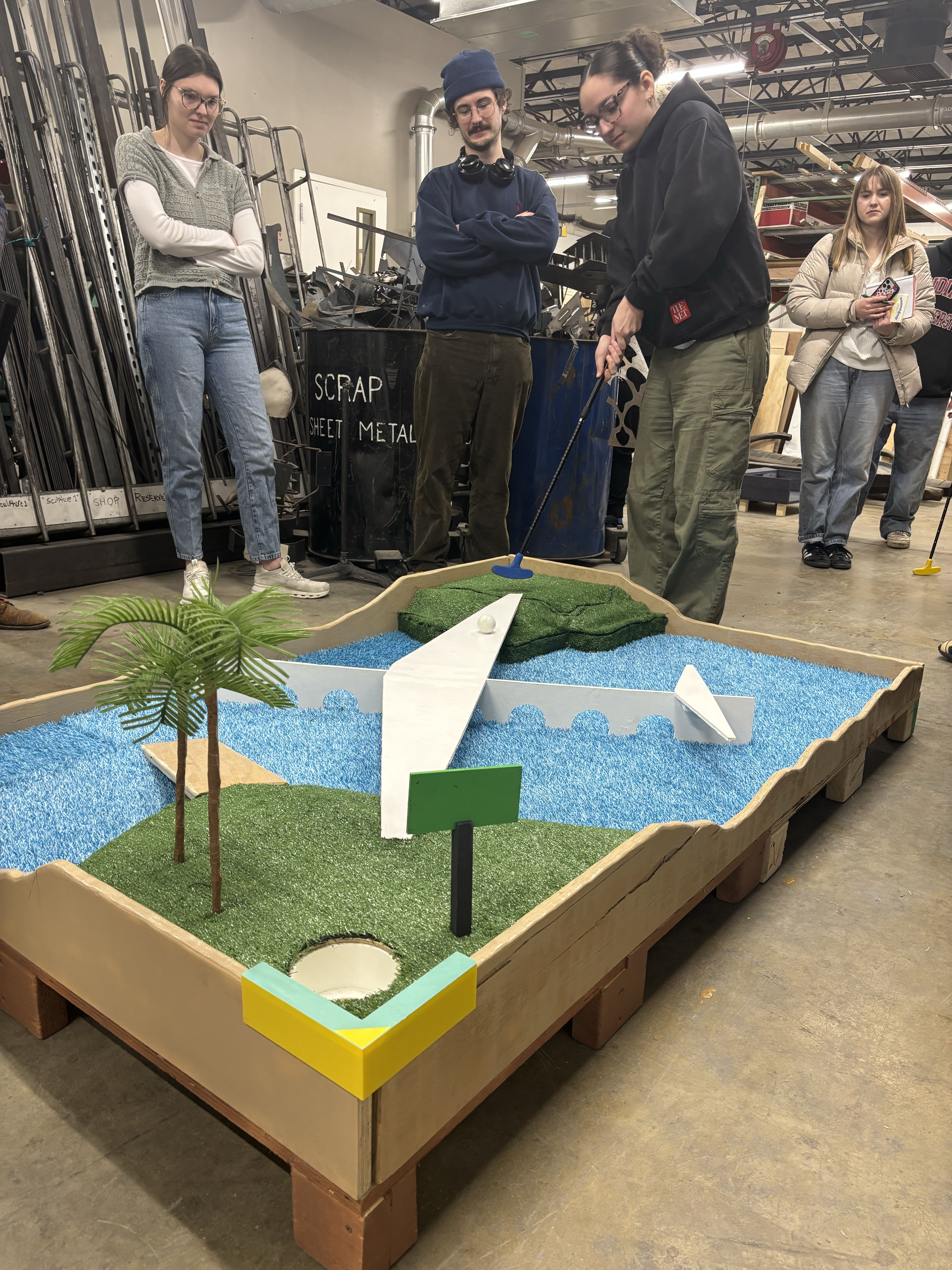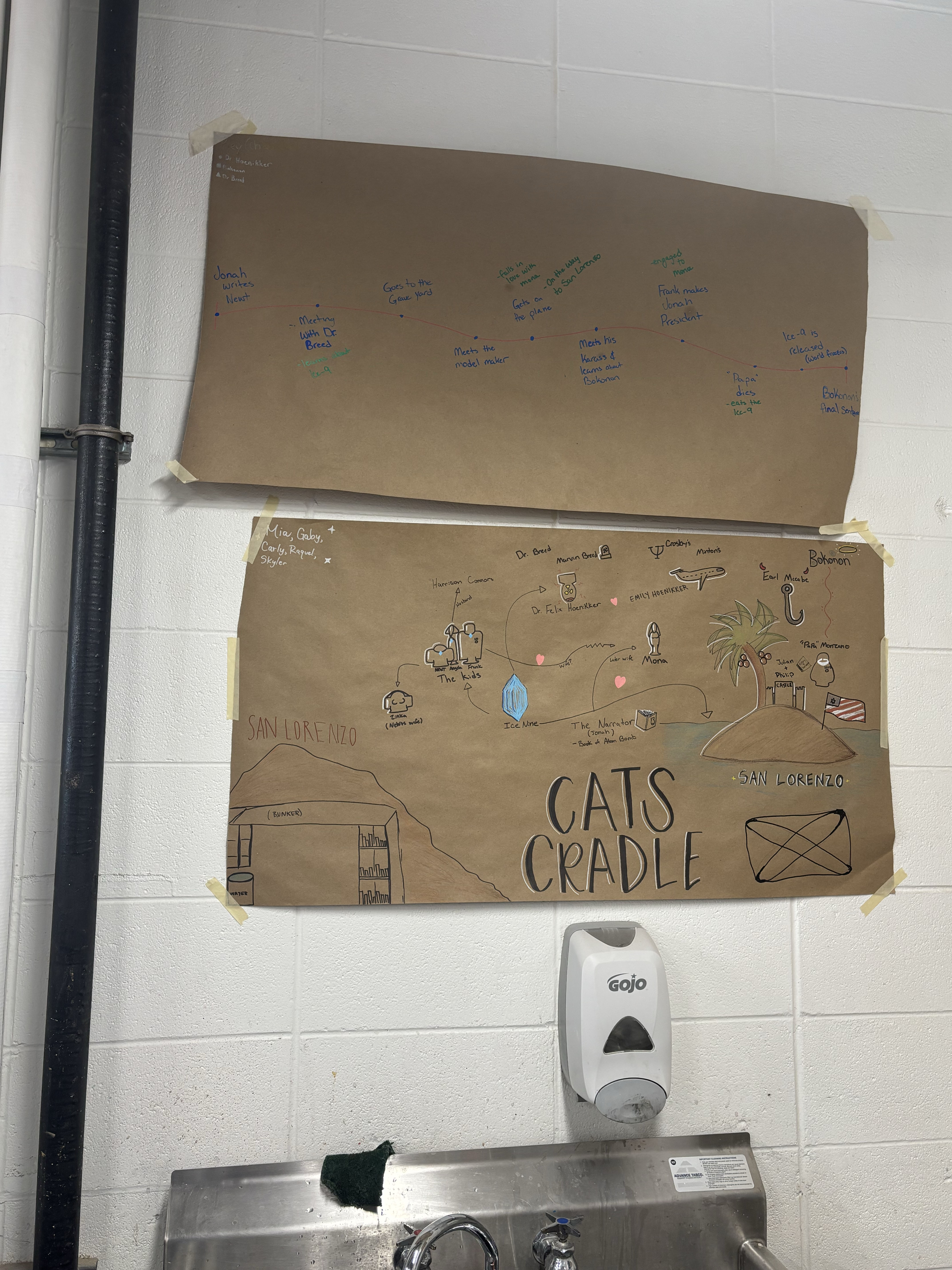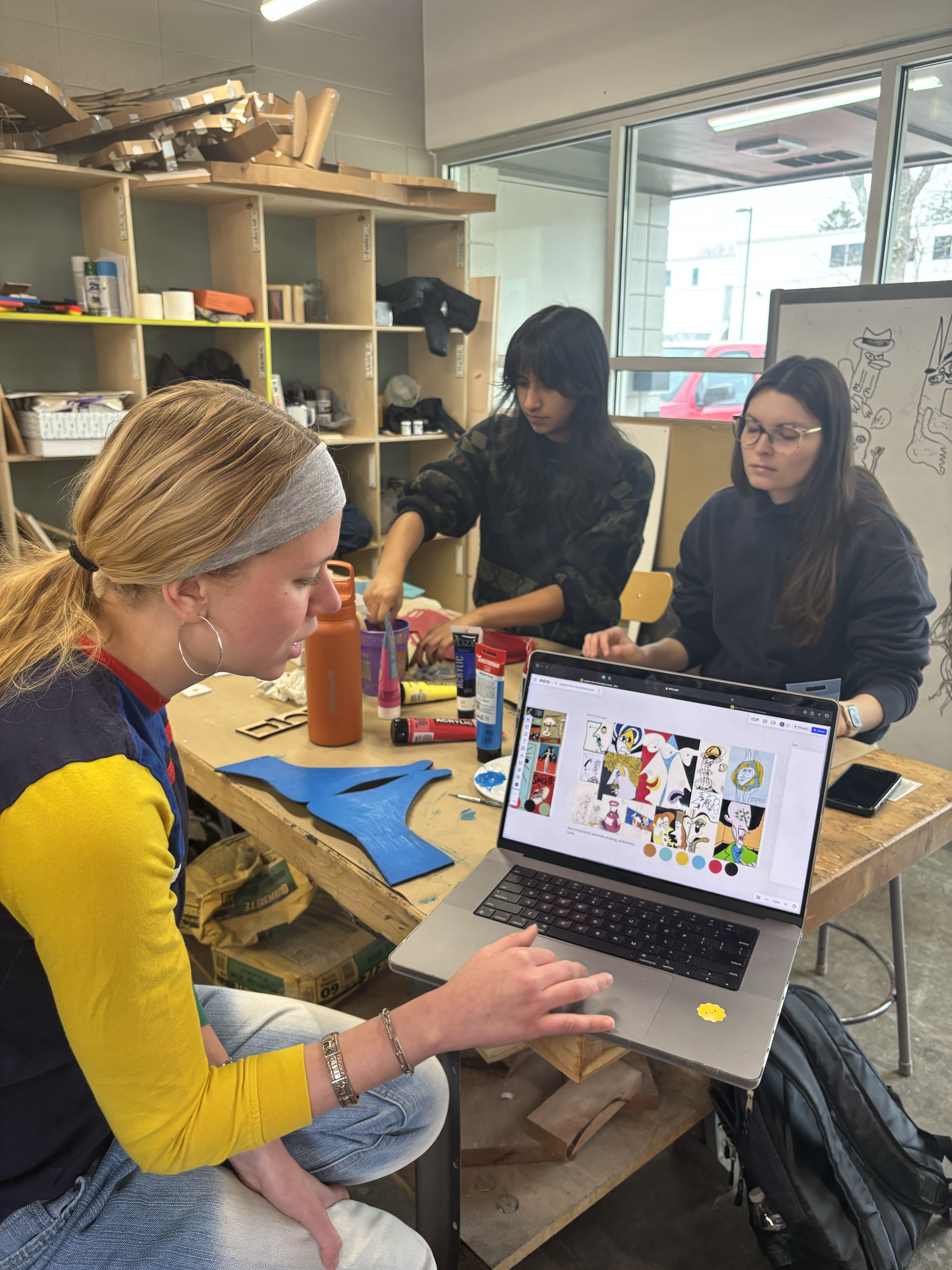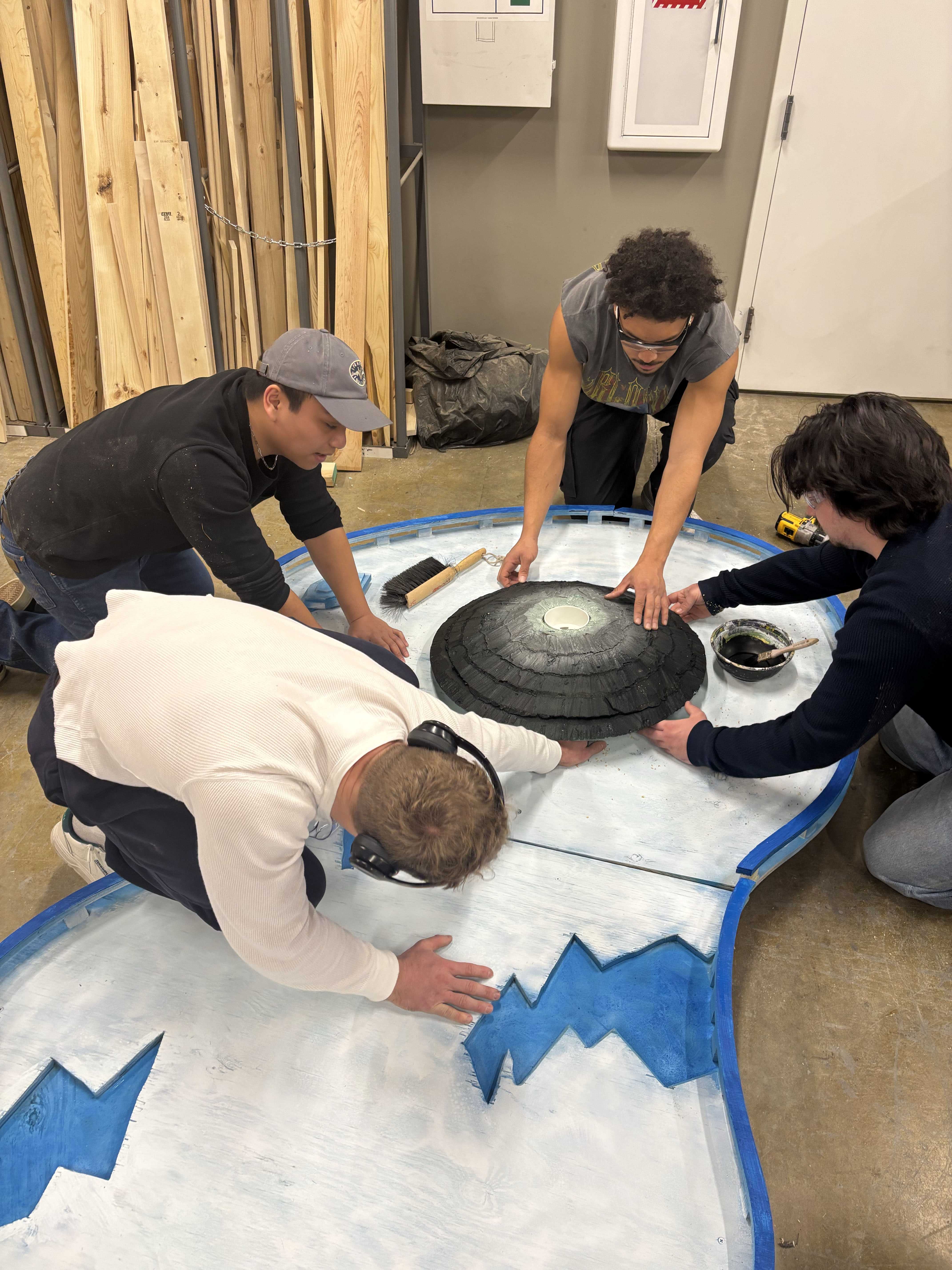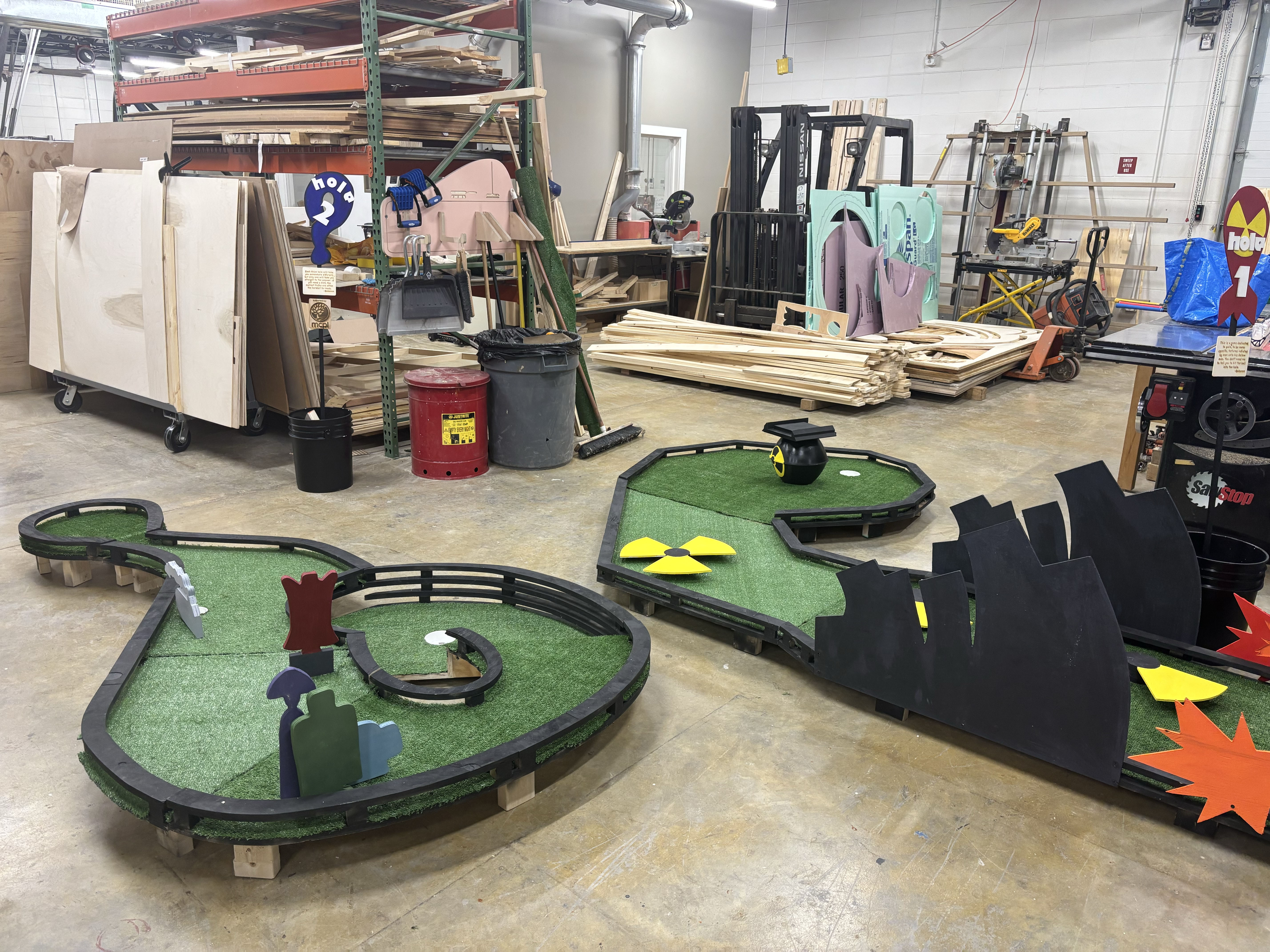A plane wreck, an ice-nine apocalypse, and an atomic bomb research journey are all obstacles you might encounter in a mini-golf course inspired by Kurt Vonnegut's "Cat's Cradle." The installation, designed and built entirely by students in an eight-week intensive course called “VonneGolf,” transforms a classic work of literature into an interactive journey through satire, science, and absurdity.
Led by Maxwell Fertik, a lecturer in comprehensive design at the Eskenazi School of Art, Architecture, and Design in the College of Arts and Sciences, the VonneGolf studio course was a collaboration with the IU Arts and Humanities Council, which hosts Granfalloon: a Kurt Vonnegut Convergence. Since 2018, the annual spring festival has hosted exhibitions, performances, lectures, and screenings across city and campus that are inspired by the Hoosier-born author. The VonneGolf studio invited students to conceptualize, prototype, and fabricate a working mini-golf course inspired by the themes, aesthetics, and narrative arc of Kurt Vonnegut's iconic novel.
"This is real-world design with a literary twist. The students aren't just creating a project for class; they're building a public experience with which hundreds of people will interact," Fertik said. "Here, the students had a real client, a real deadline, and the added twist of translating a book into a playable environment."
The entire playable mini-golfcourse will debut during the 2025 Granfalloon Festival in downtown Bloomington April-June, but lucky visitors to the IU Arts and Humanities Council’s First Thursday festival on the Fine Arts Plaza on April 3 will get apreview.
Diving into dystopia
Published in 1963, Kurt Vonnegut's "Cat's Cradle"is a dark, satirical novel that explores the folly of human systems, science, religion, and government. Narrated by an aspiring writer investigating the life of a scientist who helped invent the atomic bomb, the book weaves together humor, dystopia, and existential reflection. A native of Indiana and one of the most beloved and influential American authors of the 20th century, Vonnegut is known for his blend of science fiction, social critique, and biting wit.
At the start of the semester, the 13 students in theVonneGolf studio dove into the dystopian satire by creating story analysis and mood boards.In true studio fashion, the students were divided into teams focused on concept development, CAD design, fabrication, and graphics.
One of the biggest challenges the students encountered was visualizing a pictureless book. That challenge was also the source of abundant freedom. With no existing imagery to reference, students had to invent their own visual language, turning Vonnegut's abstract satire into tangible forms and playful design. "Everyone had different interpretations of the book, so finding a shared language took time," said Skyler Budd, a member of the concept team. The team leaned on collaborative platforms, like Miro boards and 3D modeling software, to unite their ideas.
Taking a concept into three dimensions
The concept team helped organize workflow and cross-pollinate ideas between students.Once the concepts were solidified, the modeling and CAD team began transforming them into buildable structures. Students used Fusion 360 and Rhino to create detailed 3D models of each hole and its components, including exploded isometric drawings, renderings, and blueprints for fabrication. "We took 2D sketches from the concept group and translated them into scalable 3D forms," Raquel Perez explained. "Every measurement, curve, and obstacle had to be carefully planned before a single piece of wood was cut."


